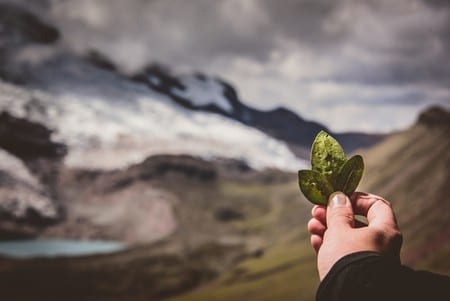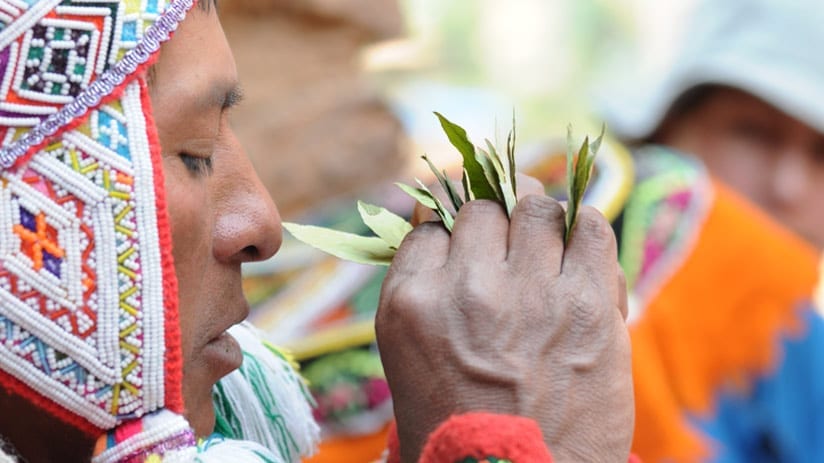The Peruvian Coca Leaf
James Bustamante is Native to New York but born to Peruvian parents. He has been traveling throughout Latin America since early 2003 and finally made his home in Peru. James has made his way by eating and traveling through almost every country in Central and South America.
Last Updated on September 12, 2022 by James Bustamante
The Peruvian Coca Leaf can play an important role in helping tourists from all over the world travel to Cusco, Peru in hopes of seeing the incredible Machu Picchu.

Upon arrival, some people may feel a little altitude sickness, so they tend to head directly to the nearest pharmacy. However, many prefer to take a more natural route, Peruvian Coca leaves.
When travelers are presented with their first cup of coca tea, their reactions are usually mixed. The ancient Inca were known to be scholars and were well ahead of the times in terms of both agriculture as well as medicine.
Throughout the years, the Inca’s continuously studied the local flora and fauna, leading to the discovery of many different uses for them. One of these findings included the vast variety of uses for the Peruvian Coca Leaf.

Originally considered to be a sacred plant, only the noble classes were allowed to use it. Many years later, its use became widespread among the common classes, eventually being used by workers and settlers alike, especially those that perform physically demanding jobs.
It was and continues to be used in religious ceremonies to the Apus (mountain spirits), Inti (the Sun) and Pachamama (Mother Earth) when the locals hike to Machu Picchu for a range of festivities. So how can the modern traveler go about using coca leaves?
Chewing Coca Leaves
Visitors that travel to Machu Picchu may have their first encounter with coca leaves at their hotel.

The first way to take coca leaves is to chew them. Now, you don’t just stick a bunch of leaves in your mouth. Locals prepare the leaves with a small amount of lime juice, which activates the alkaloid or stimulant effect.
The actual taste of the leaves is a bit on the bitter side and produces a temporary numbness in the tongue and inside the cheek. Don’t worry, it tends to be rather mild, but don’t swallow the raw leaves as it could lead to indigestion.
When chewed it is believed to suppress hunger, thirst, pain, and fatigue and many travelers bring a supply with them when hiking through the Andes.
Chewing coca leaves acts as an appetite suppressant, helps with altitude sickness, provides energy and improves digestion. It also mildly numbs your cheek. It’s impossible to get “addicted” and they don’t provide any sort of high.
Making cocaine out of coca leaves is a complicated, chemical process, and chewing the leaves is no more an act of “drug consumption” than eating a poppy-seed bagel
Mate de Coca (Coca Leaf Tea)
Another common method of consumption is to prepare Peruvian coca leaf in a mate or tea, drinking coca tea is more culturally widespread than chewing.

There are two common ways to prepare the tea: whole coca leaves are placed in a cup of tea and hot water is poured over the leaves, enjoy!
Alternatively, the crushed leaves are placed in a tea bag and prepared like any other tea, also enjoyable but not nearly as fun. The mate de coca itself tastes very similar to green tea and can be taken with or without sugar or other sweeteners.
It has similar effects to chewing the leaves without as much of the hassle and is even good for those travelers that are hoping to slim down as Coca tea is an effective way to suppress appetite.
You may even be able to stave off those cravings for an extra piece of cake as this effect can last for around 30-60 minutes before you feel hungry again.
Eating Coca Leaf
Remember that the Peruvian Coca Leaf has a variety of beneficial properties, containing essential minerals such as calcium, magnesium and phosphorus, as well as vitamins A, B1, B2, B6, C and E.

This means it can be used as to supplement your diet. It is increasingly common to see coca incorporated into food products, usually flour.
Most markets and specialty stores sell coca candies, chocolates, granola bars and cookies made with coca flour and are sold under the assumption that they have a subtle energizing effect. The Coca Museum in Cusco, Peru, is dedicated to presenting coca as a food source.
Note that it is very important that we highlight the benefits of this ancient plant as using coca in cooking helps to revive age-old traditions, but it is bringing much needed income to farmers who are trying to break away from the commonly misplaced stigma that all coca leaves are produced for the illicit drugs trade.
Frequently Asked Questions About The Peruvian Coca Leaf
It has been consumed for at least 7,000 thousand years and most likely much longer than that as there is evidence of even more ancient civilization before the Inca.
The sale / purchase of coca leaves outside of South America is prohibited. However, it is legal to buy and to buy and consume these products in South American countries such as Peru, Colombia, Bolivia, Ecuador, Argentina and Chile.
No, you would have to drink enormous amounts and / or eat tons of candy in order to feel any kind of high, but by that time you will have also ingested deadly levels of sugar. In reality just having a few candies or drinking tea a couple of times a day won’t make you feel high.
No, it isn’t. Once again, the effect is greatly exaggerated.
It is illegal to bring coca leaves into the U.S. for any purpose, including to use for brewing tea or for chewing. This is particularly true with the United States of America as any coca product is considered to the a tightly controlled illegal substance. So make sure not to take any back with you when you return from your trip.
You can buy coca leaf products at most major Peruvian supermarkets, stores and kiosks. The leaves themselves are usually available in most restaurants and tend to be offered as a complimentary drink in most hotels in Cusco.
Coca is traditionally cultivated in the lower altitudes of the eastern slopes of the Andes, or the highlands depending on the species grown, in particular in Bolivia, Colombia and Peru.
Yes, coca leaf tea can be found almost anywhere within Cusco. Whether at a museum or at a restaurant, it is a very popular drink. You may even be provided a cup of Coca leaf tea when in line at the bank or even while in a line waiting to get your Machu Picchu tickets at a local travel agency or government office.


